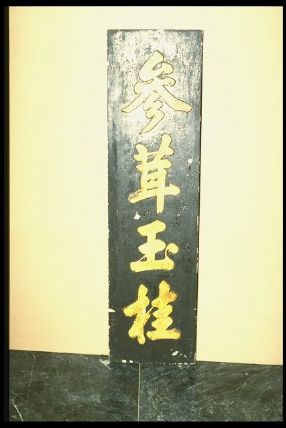As COVID-19 deaths spiked in 2020, Suzanne Firstenberg’s public art installation "In America: How could this happen…"
History Explorer Results (29)
Related Books (8)

Grade Range:
K-12
Resource Type(s):
Artifacts, Primary Sources
Date Posted:
9/30/2008
During the early 1930s, the United States and the rest of the industrialized world experienced an economic depression. In 1934, the United States continued its movement toward removing its currency from the gold standard. It even became illegal to possess gold coins or gold-based currency until C

Grade Range:
K-12
Resource Type(s):
Artifacts, Primary Sources
Date Posted:
12/17/2010
Physical Description
Handwriting on paper attached to bamboo.
Specific History
Emilio Aguinaldo’s address to the Philippine people, bearing his seal. The paper is attached to a woven bamboo board. It was found one morning hanging on a fence in the town of Bugasou, P

Grade Range:
K-12
Resource Type(s):
Artifacts, Primary Sources
Date Posted:
11/14/2008
This cardboard CARE package, contains seven smaller boxes and bags of macaroni, cornmeal, Carnation instant chocolate flavored drink mix, and nonfat dried milk. It has a paper insert reading "August 6, 1962. Greetings from the men of the U.S.S. Lake Champlain." The macaroni boxes are marked "Pack

Grade Range:
K-12
Resource Type(s):
Artifacts, Primary Sources
Date Posted:
11/4/2008
When the Depression and resulting banking crisis hit their community, the residents of the coastal town of Pismo Beach, California picked an unusual but logical medium of exchange. Perhaps with tongue in cheek, the merchants and officials of Pismo Beach decided to make the best of a bad situation

Grade Range:
K-12
Resource Type(s):
Reviewed Websites
Date Posted:
10/17/2009
This website, from the United States Mint, is a collection of resources and interactive activities aimed at educating elementary age students about the connections between coins and American history. Cartoons, games and interactive tools will give students a unique view

Grade Range:
K-12
Resource Type(s):
Artifacts, Primary Sources
Date Posted:
5/6/2010
This sign was purchased by a North Beach second-hand shop from a proprietor in the neighboring Chinatown district of San Francisco. It is said to date from between 1890 and 1910. If that is so, the sign’s survival is quite miraculous: The 1906 earthquake in April of that year caused much damage

Grade Range:
K-12
Resource Type(s):
Artifacts
Date Posted:
4/16/2018
This is one of the first models of Liberty cast in the United States. Often described as the American Committee Model, this statuette was produced in the tens of thousands. It was sold to subscribers to finance the construction of a pedestal for the full-size statue in New York Harbor.

Grade Range:
K-12
Resource Type(s):
Artifacts, Primary Sources
Date Posted:
11/5/2008
Once a new national government had been established under a new Constitution, attention naturally turned to ways of proclaiming national identity. A new, national coinage was one way of doing so, especially if it featured patriotic new images, rather than the endless sequence of crowned monarchs

Grade Range:
K-12
Resource Type(s):
Artifacts, Primary Sources
Date Posted:
11/6/2008
Before the famous California gold rush, several important strikes were made in the East: in North Carolina, South Carolina, and Georgia. The earliest took place in Mecklenburg County, N.C., in 1799, where a nugget weighing several pounds was discovered. Its finder used it as a doorstop until some

Grade Range:
K-12
Resource Type(s):
Artifacts
Date Posted:
8/12/2021
General Information: Commemorative coin made by the US Mint for Breast Cancer Awareness. Coin is gold with a pink hue. This is the first gold coin with a pink hue that the U.S. Mint has issued.This commemorative coin was minted by the United States Mint for a fundraising program for the Breast Cance












